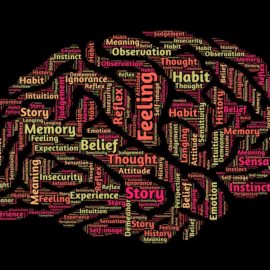

This article gives you a glimpse of what you can learn with Shortform. Shortform has the world’s best guides to 1000+ nonfiction books, plus other resources to help you accelerate your learning.
Want to learn faster and get smarter? Sign up for a free trial here .
Why is it so hard to make decisions? What are some ways you can narrow down your options to make it easier to arrive at an optimal choice?
Decision-making is difficult because nobody has access to perfectly accurate, comprehensive sources of information. Rather, our information is often messy and flawed, so we can’t always predict how our decisions will pan out. That said, there are strategies and tips that can help you arrive at the most optimal decision given the information you do have.
Here are some tips on how to make a difficult decision.
Tip 1: Consider Less Information
Most of us have been taught that to make good decisions, we need to consider as much information as possible. However, according to Malcolm Gladwell’s book Blink, sometimes the best decision is a less-informed decision. Too much information can overwhelm you with details and obscure the bigger picture.
As an example of the pitfalls of overloading yourself with information before a decision, Gladwell discusses a shift that occurred at Cook County Hospital in Chicago in the late 1990s, when it changed the way it assessed ER patients with chest pain. Previously, doctors had taken a multitude of complex factors into account when diagnosing heart problems, leading to many inconsistent and potentially incorrect decisions.
A new computer algorithm reduced that large number of factors to four. The algorithm increased the accuracy of negative diagnoses by 70% (reducing the costs to the hospital of admitting patients who weren’t in danger of having a heart attack) and increased the accuracy of positive diagnoses to 95% (saving the lives of people who did go on to have major complications).
For this advice to be genuinely useful, we need to have some way of distinguishing crucial from superfluous information. Gladwell doesn’t provide this, but a good way of doing this is interpreting the information we receive as “signal,” or information that reveals key patterns, plus “noise,” or information that distracts us from the signal. If we listen carefully for the signal, we’re more likely to be feeding meaningful information into our unconscious decision-making apparatus. As Nate Silver argues in The Signal and the Noise, people who are highly accurate forecasters tend to use statistical analyses to separate signal from noise. They also avoid being overconfident in their predictions and pay extreme attention to detail.
So, next time you’re faced with a difficult decision, try to limit the information that goes into your decision-making.
TITLE: Blink
AUTHOR: Malcolm Gladwell
TIME: 30
READS: 36.3
IMG_URL: https://www.shortform.com/blog/wp-content/uploads/2019/09/blink-cover.jpg
BOOK_SUMMARYURL: blink-summary-malcolm-gladwell
AMZN_ID: B000PAAH3K
Tip 2: Expand Your Options
When it comes to decision-making, we tend to come up with only two options. Thinking in binary terms may be less cognitively taxing, but it limits your options and clouds your judgment. In their book Decisive, authors Dan and Chip Heath recommend pursuing a both/and option: one that combines the best parts of both options. One technique for creating a both/and option is to combine an optimistic choice with a cautious one. A cautiously optimistic option prepares you for a range of outcomes—both positive and negative. It serves as a middle ground between a high-risk option and one that’s too prudent.
For example, imagine a postal worker who’s considering quitting his job to become an artist. Within the binary of “quit or not,” the optimistic option is to quit and hope he can earn a living making art. The cautious option is to continue as a postal worker. A cautiously optimistic option could be to reduce his hours at the post office while he takes time to launch his career as an artist.
Another strategy for developing more options is somewhat counterintuitive: Imagine that one or more of your options have been eliminated. The authors claim that when we rule out an option, we handle this constraint by creatively developing other options.
For example, consider someone who wants to sign up to run a full marathon. However, they’re new to running, and they wonder if they’ll be ready in time. After they imagine eliminating the option of running a full marathon, they research other possibilities. They add “run a half-marathon” to their list. It’s an option that’s both ambitious and realistic.
Tip 3: Explore Your Options, Then Commit
What about decisions that present us with too many options? In their book Algorithms to Live By, Brian Christian and Tom Griffiths explain how to make a difficult decision when you’re presented with multiple options. To choose the best from a series of options, explore without committing for the first 37%, then commit to the next top pick you see.
For example, imagine you’re looking for a job and know your skills are in high demand. After a couple of days of searching, you receive an offer out of the blue that’s better than any of the available positions you’ve seen so far. However, it doesn’t have everything you’re looking for. Do you take it or keep searching for better options?
According to Christian and Griffiths, statisticians have determined that the optimal way to solve this problem is to initially reject all opportunities, exploring your options to get a sense of what quality looks like. Then, at a certain point, you should commit to the next option that’s better than any you’ve seen so far. By calculating the probability that you pick the best option available for every possible “pivot point” from exploration to commitment, researchers have determined that you should explore for the first 37% of options, then commit to the next best opportunity.
TITLE: Algorithms to Live By
AUTHOR: Brian Christian and Tom Griffiths
TIME: 61
READS: 135
IMG_URL: https://www.shortform.com/blog/wp-content/uploads/2021/12/algorithms-to-live-by-cover.png
BOOK_SUMMARYURL: algorithms-to-live-by-summary-brian-christian-and-tom-griffiths
AMZN_ID: XYZ
| How to Make a Difficult Decision In Business In business, it’s dangerous to say, “Let’s decide later.” You want to keep moving forward, and that only occurs when decisions get made, even if those decisions aren’t perfect. You may think you need to wait to decide until you have more information about the choice at hand, but you’re just as likely to make a good decision today as you are tomorrow. In Rework, Jason Fried and David Heinemeier Hansson write that in business it’s far more productive to make the wrong decision now than to put off deciding until later. You can build on a less-than-perfect decision by making corrections and alterations. You can’t build on an empty void in which no decision was made. |
Decisions That Aren’t Worth Your While
While it’s important to know how to make a difficult decision, it’s no less important to know when a decision isn’t worth your while. In the modern world of almost endless choices, it’s too easy to lose sight of what really matters and spend too much time deliberating decisions in inconsequential areas.
In The Paradox of Choice, Barry Schwartz recommends deciding which choices to spend time on, and which to make without much deliberation. Schwartz cites the work of Cass Sunstein and Edna Ullmann-Margalit, who described decisions we shouldn’t have to think much about, and can therefore automate, as second-order decisions. They identify four categories of second-order decisions:
- Rules: By making rules for ourselves about certain choices (for example, that you always stop at stop signs), you can reduce the number of choices in your life.
- Presumptions: Like rules, presumptions are predetermined choices you make for yourself. However, you can change presumptions if your circumstances change. For example, if you start work each day at 9 a.m., you might set your alarm for 7 a.m. daily. Your presumption is to wake up at 7 each day. However, if you have an 8 a.m. doctor’s appointment, you might set your alarm for earlier.
- Standards: Standards are more flexible than rules or presumptions, but they still confine your choices. To set standards means to sort your options into two categories: acceptable and unacceptable.
- Routines: We build routines when we find something that meets our standards (for example, we buy the same latte at the same coffee shop every day).
TITLE: The Paradox of Choice
AUTHOR: Barry Schwartz
TIME: 68
READS: 59.6
IMG_URL: https://www.shortform.com/blog/wp-content/uploads/2022/01/the-paradox-of-choice-cover.png
BOOK_SUMMARYURL: the-paradox-of-choice-summary-barry-schwartz
AMZN_ID: XYZ
Final Words
Our decisions chart the course of our lives. Fortunately, the outcomes of our decisions aren’t totally out of our control: We can learn strategies to cut through the noise and make better decisions both in our personal and professional lives.
If you enjoyed our article about how to make a difficult decision, check out the following suggestions for further reading:
The Great Mental Models Volume I
In our unpredictable and competitive world, your ability to make good decisions has an exceptional impact on your success in life and work. Fortunately, you can become a skilled decision maker by using mental models—powerful thinking tools that equip you to cut through complexity and understand the world. In this first volume of The Great Mental Models series, Farnam Street founder Shane Parrish will teach you how to make a difficult decision, how to estimate probability, and how to solve problems using timeless, proven mental models.
In The Art of Thinking Clearly, Rolf Dobelli breaks down the most common logical fallacies that inhibit decision-making, including confirmation bias, social proof, and hindsight bias. Dobelli aims to teach you how to make a difficult decision by recognizing and overcoming these fallacies.

Want to fast-track your learning? With Shortform, you’ll gain insights you won't find anywhere else .
Here's what you’ll get when you sign up for Shortform :
- Complicated ideas explained in simple and concise ways
- Smart analysis that connects what you’re reading to other key concepts
- Writing with zero fluff because we know how important your time is






